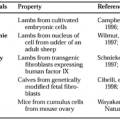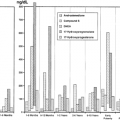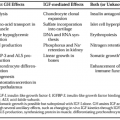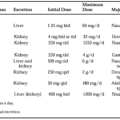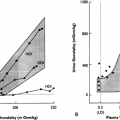OVERVIEW OF PEPTIDE HORMONE SYNTHESIS AND SECRETION
Proteins are important as the backbones of polypeptide hormones and as integral components of enzymes that participate in the biosynthetic pathways of steroid and thyroid hormones as well as enzymes that participate in intracellular synthetic and degradative actions and in energy generation. They are critical membrane, receptor, and cytoskeletal molecules, and an appreciation of the pathways for polypeptide synthesis and their associated cellular structures is important. This section describes the general pathways of polypeptide synthesis, with an emphasis on the informational flow from the gene to the final functional protein and the cell structures involved in each of the steps in this highway of biochemical events.1,2 and 3 The production of a functional protein hormone requires numerous steps, each one involving modifications or processing of precursor molecules.
The eukaryotic cell consists of two major compartments, the nucleus and cytoplasm (Fig. 3-1 and Fig. 3-2), which are delimited by plasma membranes that are topologically contiguous with one another (see Fig. 3-2). The nucleus is surrounded by a nuclear envelope consisting of an outer and inner membrane encompassing a cisternal space.4 The nuclear envelope is perforated by nuclear pore complexes that permit communication of the nucleoplasm with the cytoplasm.
 FIGURE 3-1. Electron micrograph of a rat lactotrope. The rat lactotrope in the anterior pituitary gland synthesizes and secretes prolactin. This electron micrograph reveals a portion of a lactotrope, including the two major compartments, nucleus (N) and cytoplasm. The nucleus is delineated by a double membrane, the nuclear envelope. The key organelles in the synthesis and processing of polypeptide hormones include therough endoplasmic reticulum (r), Golgi stack (G), secretory vesicle (v), and secretory granule (sg). Mitochondria (m), the major source of cellular energy, are shown. The secretory granules are characterized by an electron-dense material representing condensed polypeptide hormone. (Courtesy of Gwen V. Childs, University of Texas at Galveston.)
Stay updated, free articles. Join our Telegram channel
Full access? Get Clinical Tree
 Get Clinical Tree app for offline access
Get Clinical Tree app for offline access

|
